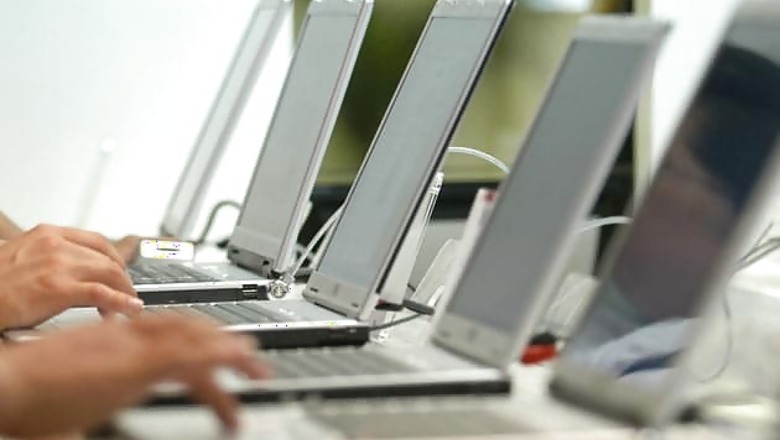
views
Washington: Imagine if your smartphone or computer could repair on its own! It might sound like the stuff of science fiction as engineers at the California Institute of Technology, for the first time ever, have developed self-healing integrated chips.
It means your smartphones or computers can repair and defend themselves on the fly, recovering in microseconds from problems ranging from less-than-ideal battery power to total transistor failure.
The team demonstrated this self-healing capability in tiny power amplifiers, which are so small, in fact, that 76 of the chips including everything they need to self-heal could fit on a single penny.
They destroyed various parts of their chips by zapping them multiple times with a high-power laser, and then observed as the chips automatically developed a work-around in less than a second.
"It was incredible the first time the system kicked in and healed itself. It felt like we were witnessing the next step in the evolution of integrated circuits," said Ali Hajimiri, the Thomas G Myers Professor of Electrical Engineering at Caltech.
"We had literally just blasted half the amplifier and vaporised many of its components, such as transistors, and it was able to recover to nearly its ideal performance," said Hajimiri in a statement.
Until now, even a single fault has often rendered an integrated-circuit chip completely useless. Engineers wanted to give integrated-circuit chips a healing ability akin to that of our own immune system something capable of detecting and quickly responding to any number of possible assaults in
order to keep the larger system working optimally.
The power amplifier they devised employs a multitude of robust, on-chip sensors that monitor temperature, current, voltage, and power.
The information from those sensors feeds into a custom-made application-specific integrated-circuit (ASIC) unit on the same chip, a central processor that acts as the "brain" of the system.
The brain analyses the amplifier's overall performance and determines if it needs to adjust any of the system's actuators the changeable parts of the chip.
Interestingly, the chip's brain does not operate based on algorithms that know how to respond to every possible scenario. Instead, it draws conclusions based on the aggregate response of the sensors.
Looking at 20 different chips, the team found that the amplifiers with the self-healing capability consumed about half as much power as those without, and their overall performance was much more predictable and reproducible.














Comments
0 comment